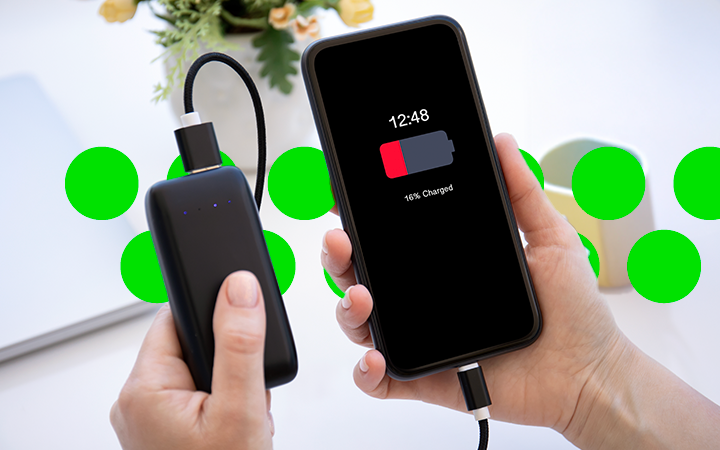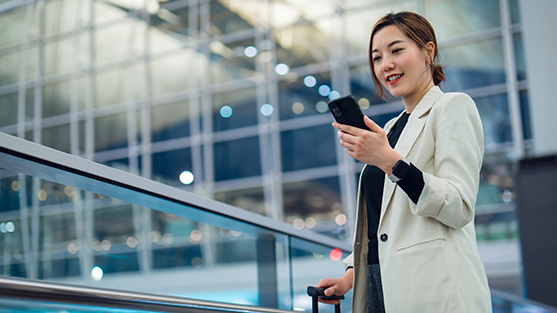Airlines have changed rules for carrying power banks in-flight. Here’s what it means for you

Portable chargers or power banks have become an essential, especially for business travellers, to keep devices charged while travelling. But new airline restrictions could see the end of unlimited charging onboard from these devices.
Travellers who rely heavily on recharging their mobile phones and laptops, especially during business trips for work or entertainment, will have to look at new ways to keep the batteries charged as several airlines are not allowing the use of power banks throughout the flight.
Popular long-haul carrier Singapore Airlines and its low-cost carrier, Scoot, introduced the restrictions from 1st April 2025. Other airlines that enforced the new rule include China Airlines, Thai Airways, Korean Airlines, Asiana Airlines and EVA Air.
AirAsia also restricted the usage and charging of power banks on flights. Korean Air and Asiana have banned power banks from overhead luggage bins, asking passengers to keep the portable chargers with them at their seats.
Besides Asian, many international carriers operating from different regions have introduced the new requirements.
The stricter rules come after a series of fires caused due to the overheating power banks. Recently, a power bank caught fire on a Hong Kong Airlines, raising safety concerns and risks posed by power banks.
We are seeing carriers taking precautionary and preventive measures. Many Asian airlines are introducing new safety protocols, so it’s important that travellers understand these new restrictions and the impact it will have on them. We’ll see how business travellers can keep their devices charged, particularly on the longer haul trips,
Kenji Soh, General Manager- Southeast Asia, FCM Travel Asia.
Power banks must be carried in cabin baggage on all flights, according to international aviation regulation, and not stored in checked-in luggage, but this new requirement set by airlines to safeguard passengers takes this to a new level.
Different requirements of airlines:
Here’s a break-up of different rules by airlines. For details, please check their individual websites or reach out to your FCM account manager:
| Airlines | Power bank charging or using for charging other devices | Allowed in Checked Baggage | Where to store in cabin | Capacity Limit (Without Approval) |
| Singapore Airlines | ❌ Not allowed | ❌ Not allowed | Cabin only | Up to 100Wh; approval required for 100Wh-160Wh exceeding the limit requires approval |
| Fly Scoot | ❌ Not allowed | ❌ Not allowed | Cabin only | Up to 100Wh; approval required for 100Wh-160Wh exceeding the limit requires approval |
| AirAsia | ❌ Not allowed | ❌ Not allowed | Under seat or seat pocket only | Up to 100Wh; approval required for 100Wh-160Wh exceeding the limit requires approval |
| Malaysia Airlines (incl. Firefly & MASwings) | ❌ Not allowed | ❌ Not allowed | Under seat or seat pocket only | Up to 160Wh; approval reqd for 100Wh-160Whexceeding the limit requires approval |
| Cathay Pacific | ❌ Not allowed | ❌ Not allowed | Under seat only | Up to 160Wh |
| China Airlines | ❌ Not allowed | ❌ Not allowed | Avoid overhead | Up to 160Wh; approval reqd for 100Wh-160Whexceeding the limit requires approval |
| Hong Kong Airlines | ❌ Not allowed | ❌ Not allowed | Under seat only | Up to 160Wh |
Tips for staying connected and charged up during business trips
- Familiarise yourself with your airline's specific policies before you travel.
- Onboard the flight with a fully charged device. Try to charge your devices at the airport while you wait to fly.
- Pack a charging cord in your carry-on that has a USB connection. Most planes, particularly on those longer haul flights, will have USB plugs.
- Think about the device you are taking onboard with you – sometimes a laptop is not the most effective way to stay connected, continue working on, or keeping entertained from the sky. You can't charge a laptop via the USB plugs onboard. A tablet tends to be the best way to go for a bigger screen, full functionality, and easy charging capability.
- Make use of the in-flight infotainment systems when they are available. Rather than draining your battery watching a movie on your own device, use the built-in systems where possible.
- Make sure you are purchasing certified power banks from reputable manufacturers to ensure you, and your fellow passengers are not at risk.


